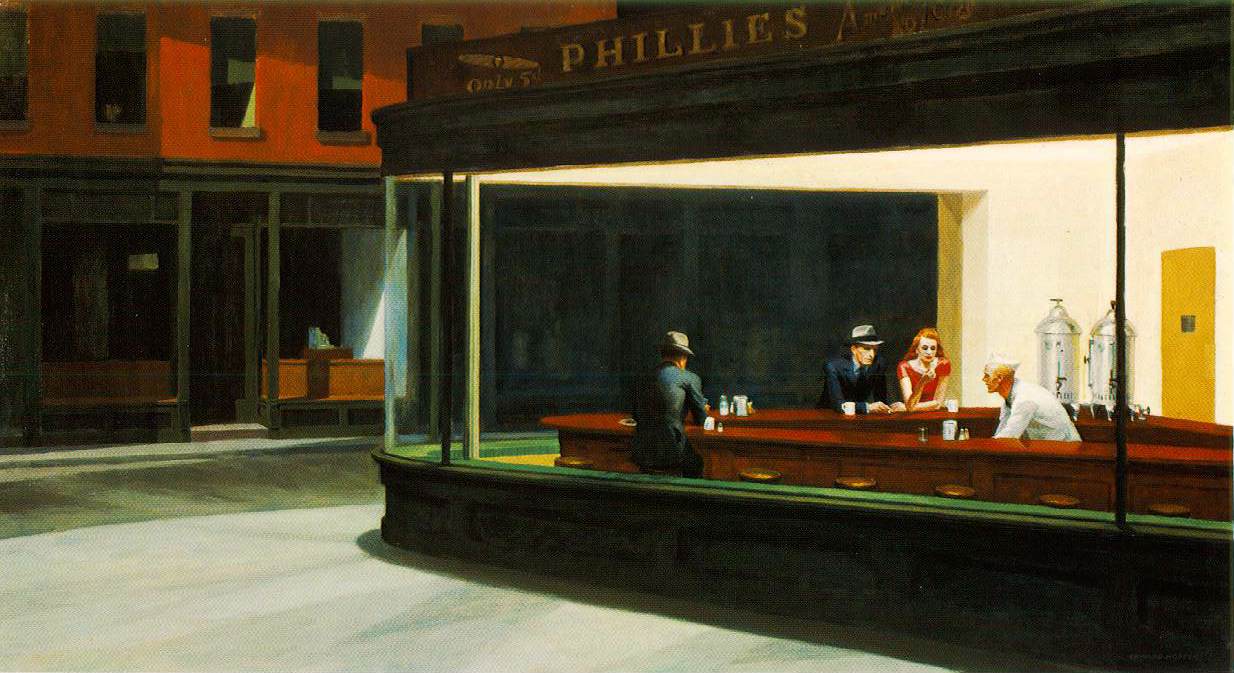"It's not what you are, but what you don't become that hurts." MEANING OF THE QUOTE:
"Not working up to and using your abilities to their fullest potential
will stop you from feeling content with your progress."
COMPOSER
COPLAND
Quiet City

Quiet City
London Symphony Orchestra
Some pictures of New York
Originally written as incidental music for
 |
| Irwin Shaw |
in 1939, Quiet City was re-arranged by
Copland the following year into a one
movement, ten minute piece for solo
trumpet, solo English horn (cor anglais)
.png) |
| English Horn |
with a string ensemble backing. This piece,
which premiered in New York City and
performed by conductor David Saidenberg
and his Saidenberg Little Symphony,
the nocturnal thoughts of various dwellers in a great city
and played the trumpet to express his feelings about them.
Copland's biographer, Vivian Perlis, has said that the music in this piece
"reflects the introspective Copland, who liked to compose during the late night
hours and enjoyed the idea of quiet streets before a city awakens for a new day."
 |
| Edward Hopper: Night Hawks |
The music is also intended to reflect the sounds and feelings of "a city that never
sleeps." This is effectively achieved through the use of space and silence; the
texture is never particularly dense, but rather sparse and open as if reflecting upon
the vastness of the city landscape. There is also a distinct improvisatory feel to the
melodies in both the horn and trumpet, which adds to the idea of two people
interacting with one another.
Quiet City is decidedly melancholic and contemplative. It opens with broadly
spaced atmospheric chords from strings and English horn, evoking a transparent
-like night stillness. The trumpet soon enters with tentative, haunting notes (which
Copland marked as "nervous, mysterious") and gently emotional phrasings.
Copland viewed Quiet City as
"a rather unusual showpiece for the two soloists; unusual
because one seldom hears trumpet and English horn in roles
as contrasting instruments in a soloistic yet quiet setting."
"The idea of contrasting trumpet with English horn was a travaille, a 'find,'
giving, I think, a certain freshness and variety of instrumental color,"
Continuing on, Copland said of his instrumentation choice:
"A practical reason for the English horn was to let the trumpeter
have a breathing space, so that he wasn’t made to play continuously…
There are not many quiet trumpet-solo works in the repertory, and I
doubt whether there are many English horn solo-pieces of any sort.
Quiet City is challenging music for the soloists, with a comparatively
straight forward orchestral accompaniment."
 |
| Georgia O'Keeffe: Radiator Building Night New York, 1927 |
Quiet City
Wynton Marsalis, trumpet
Phillip Koch, English horn
Conducted by Donald Hunsberger
Eastman Wind Ensemble
Quiet City, based on material Copland had
previously written for a stage production, was
a play which focused on two main characters,
whose personalities, as well as their emotions
and angst, were portrayed through music.
The Irwin Shaw play, commissioned by
founding member of the Group Theatre in
New York City, and directed by Elia Kazan,
| Elia Kazan |
was, as Copland described it,
"…a realistic fantasy concerning the night thoughts
of many different kinds of people in a great city."
The music aimed at expressing
"the emotions of the characters, the nostalgia and inner
distress of a society profoundly aware of its own insecurity."
The story tells of two Jewish brothers, one of whom abandons his Jewish
ancestry to pursue a life of material success; changes his name, marries a
rich socialite, and rises to become the president of a department store, and
the other a jazz trumpeter who, content with being an artist, embraces a more
unconventional, isolated lifestyle, expressing his loneliness through his music.
Not succeeding in making the break with his past, the materialistic brother is
continually recalled to his conscience by the haunting sound of the trumpet
his brother is playing. Copland said, in reference to the dichotomy of the two
characters, that it
"helped to arouse the conscience of his fellow players and the audience."
Though the play closed after only the two trial Sunday evening performances in
April, 1939, the music was not to blame. The play's producer later even stated that
"all that remained of our hard work was a lovely score by Aaron Copland."
Copland was convinced by friends to rework the score as a small orchestra
piece and in the summer of 1940 he fashioned Quiet City into a concert suite,
changing the original instrumentation from trumpet, clarinet, saxophone and
piano to trumpet, English horn and string orchestra. In this form Quiet City
was played for the first time on January 28, 1941 in New York and has proved
to be one of Copland’s most effective short works.
In reference to how he reworked the original music Copland stated:
"There wasn't much continuous music with the play, just short
sections, so that the orchestral piece bears little resemblance
to the incidental music, which I never published."
Even though the music was written to accompany a play, he was able to
recreate the musical sections into a piece that stands alone nicely:
"Quiet City seems to have become a musical entity,
superseding the original reasons for its composition."
This music has survived as a popular piece
long after the play has been forgotten.

The composer and saxophonist, Christopher Brellochs, recently
unearthed the original manuscript for trumpet, saxophone,
clarinets and piano had never been published and recorded the
world premiere of Quiet City in its original form.
Quiet City
(Original Chamber Version)
Christopher Brellochs, saxophone
Donald Batchelder, trumpet
Mitchell Kriegler, clarinet
Allison Brewster Franzetti, piano
LINKS
Quiet City
for English horn, trumpet & strings
(from the incidental music)
With William Harrod and Philip Collins
Conducted by Erich Kunze
Cincinnati Pops Orchestra
Photos of Los Angeles



